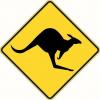Guys, here is a pic of my Frankenplane. Its a Bailey #5 with a Cosman blade which I finished sharpening and honing. Now have get it to fit this plane. I found a video by Rob Cosman that says you have to file the throat to get a proper fit as the blade and back iron are so much thicker actually over twice as thick as the original ones. In the video he never says how much to file that heard or saw.
Has anyone done this type of retro fit and is your throat opening beyond .260 inches? In the pic of the throat and blade the back of the blade is bottomed against the sole of the unit and the blade is still not projecting. I have a small amount that I can still move the frog forward and try to bring the blade thru again but it would most likely hit the front edge. Just want to ask b4 I take away too much material. Any thoughts advice welcome.




 Reply With Quote
Reply With Quote




 .
. 

